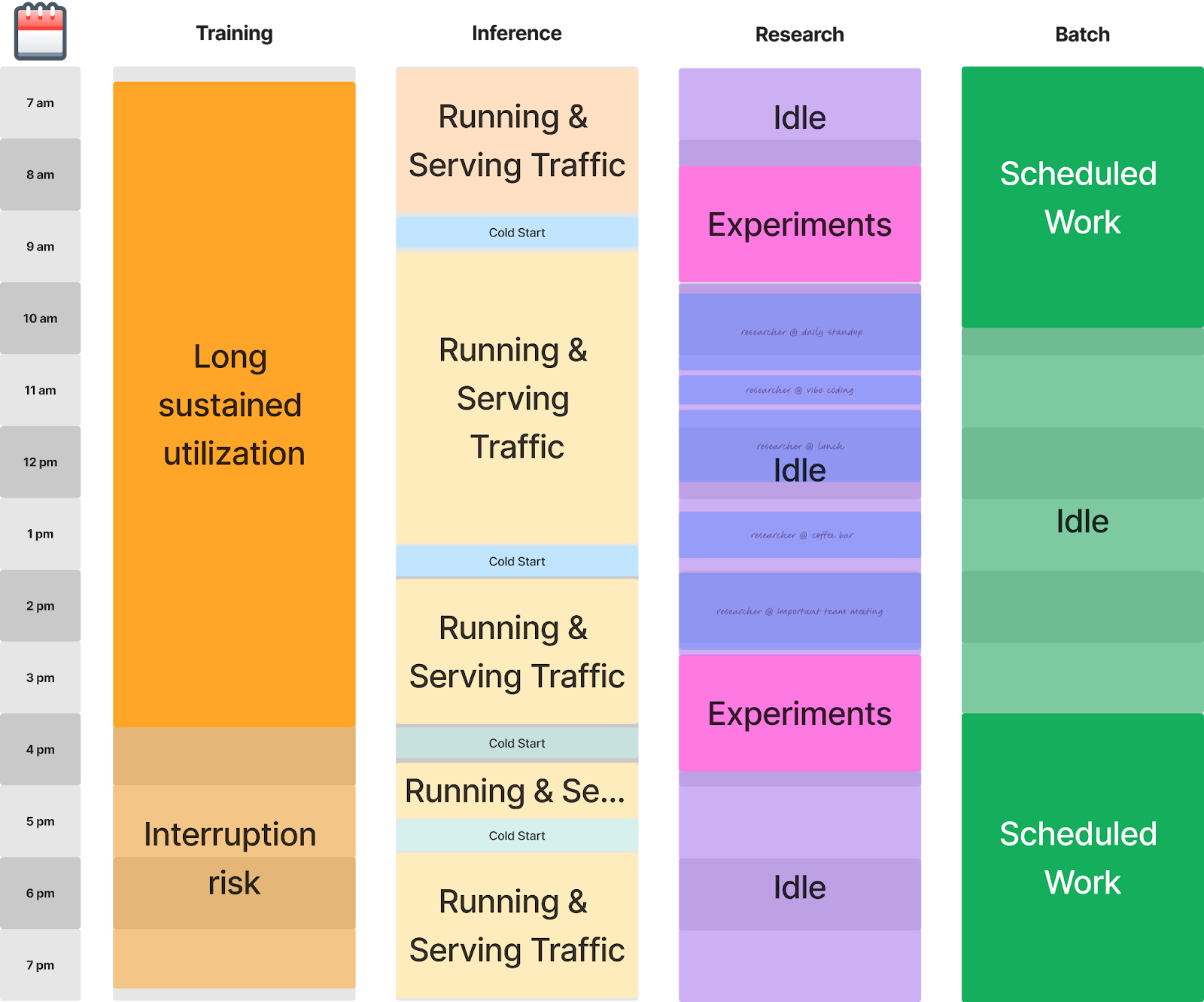This is a 5 part series on why GPU clusters are under-utilized, how to measure utilization and how to improve it.
Part 1 - Why is your GPU cluster idle
Part 2 - How to measure your GPU utilization
Part 3 - How to fix your GPU utilization
Part 4 - GPU security and Isolation
Part 5 - Tips for optimizing GPU utilization in Kubernetes
Why is your GPU cluster idle
While organizations obsess over CPU and memory optimization in their Kubernetes clusters, a far more expensive problem is quietly destroying budgets: GPU underutilization. The average GPU-enabled Kubernetes cluster runs at 15-25% utilization, but unlike CPU overprovisioning, which can waste thousands of dollars per month, GPU underutilization can burn through tens or hundreds of thousands.
Consider this: a single NVIDIA H100 instance costs $30-50 per hour across major cloud providers. An underutilized cluster with 20 GPUs running at 20% utilization incurs approximately $200,000 in annual compute costs alone. Yet most organizations lack the monitoring, processes, and architectural strategies to address this systematic waste.
The challenge isn't just about resource efficiency—it's about the fundamental economics of AI/ML infrastructure. GPU resources are 10-50x more expensive than traditional compute, making optimization not just beneficial but business-critical. This post examines how various ML workload types lead to overprovisioning, strategies for monitoring actual GPU utilization, and architectural approaches that can significantly enhance ROI.
Understanding GPU Workload Patterns: The Foundation of Optimization

GPU utilization challenges stem from the diverse and often unpredictable nature of machine learning workloads. Unlike traditional applications with relatively consistent resource patterns, ML workloads exhibit dramatically different utilization characteristics that require workload-specific optimization strategies.

Training Workloads: The Interruption Cost Problem
Training workloads represent the most resource-intensive and potentially wasteful category of GPU usage. These workloads typically run for hours or days, consuming substantial GPU memory and compute resources. However, they're particularly vulnerable to interruption costs that can multiply resource waste.
When a training job is interrupted without proper checkpointing, the entire computational investment is lost. A 12-hour training run that gets interrupted at hour 10 without checkpoints requires restarting from scratch, effectively wasting 10 hours of expensive GPU time. This creates a perverse incentive for teams to overprovision resources to minimize interruption risk, leading to systematic underutilization.
Checkpoint/Restore technology fundamentally changes this equation. By capturing the complete state of training processes—including GPU memory, model weights, and optimizer states—checkpointing enables training workloads to resume from interruption points rather than having to restart. This resilience allows organizations to utilize more cost-effective, interruption-prone instances (such as spot instances) while maintaining training reliability.
CRIU-GPU, an emerging technology that extends checkpoint/restore capabilities to GPU-accelerated workloads, represents a significant advancement in training efficiency. By capturing GPU state alongside CPU state, CRIU-GPU enables seamless migration of training workloads between nodes, more aggressive use of spot instances, and faster recovery from failures.
Real-Time Inference: The Cold Start Challenge
Real-time inference workloads, typically deployed as Kubernetes Deployments, face different optimization challenges centered around responsiveness and resource efficiency. These workloads must maintain low latency while efficiently utilizing expensive GPU resources.
The primary efficiency killer in inference workloads is the cold start problem. When inference pods restart or scale up, they must reload large models into GPU memory. This process can take 30 seconds to several minutes for large language models or computer vision models. During this loading period, the GPU is partially utilized while the system prepares for inference requests.
Consider a scenario where you're running an 80GB language model on an H100 with 141GB of GPU memory. While the model fits comfortably in memory, the loading process creates a significant gap in utilization. If pods restart frequently due to deployment updates or node maintenance, these cold starts accumulate substantial waste.
Strategic right-sizing becomes critical for inference workloads. Rather than defaulting to the largest available GPU instance, teams should match GPU memory requirements to model sizes while considering replica strategies that minimize cold start frequency.
CRIUgpu (generally, checkpointing GPU workloads) is used to serialize the contents loaded in GPU memory (instead of having to redownload the weights, etc on restart) is critical to help reduce cold start times on pod restart.
Batch Inference: Throughput vs. Utilization Trade-offs
Batch inference workloads process large volumes of data asynchronously, typically using Kubernetes Jobs or CronJobs. These workloads offer the most significant opportunity for optimization because they can tolerate higher latency in exchange for better resource efficiency.
The key optimization principle for batch inference is utilization density—maximizing the amount of useful work performed per GPU-hour. This often involves batching strategies that fully utilize GPU memory and compute capabilities, even if individual request latency increases.
Research Workflows: The Utilization Killers
Research and experimentation workflows represent the most challenging category for GPU utilization optimization. These workloads, often running in Jupyter notebooks or interactive development environments, exhibit highly irregular usage patterns with long idle periods.
A typical research workflow might involve:
- Loading a large dataset into GPU memory
- Running short experiments with high GPU utilization
- Long periods of analysis and code modification with zero GPU usage
- Abandoned experiments that continue consuming resources
Research workflows often receive priority access to GPU resources due to their exploratory nature; however, this priority frequently results in poor utilization. A data scientist might reserve an H100 instance for a week-long research project but only actively use the GPU for 10-15% of that time.
Join this upcoming workshop with NVIDIA to learn more about GPU utilization for Kubernetes. Register here.





.webp)


